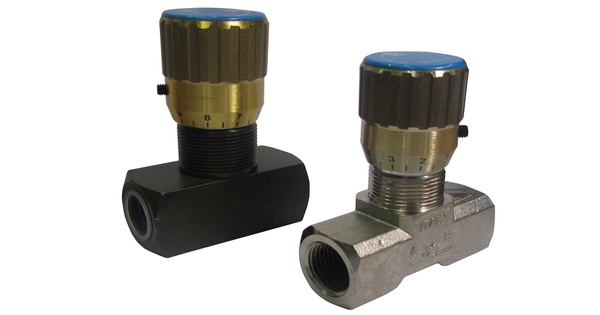A flow control valve controls the flow or pressure of fluid. It is a mechanical device that controls the flow rate of a fluid, such as water, gas, or oil, in a piping system. Control valves typically respond to signals sent by separate devices such as flow meters or temperature gauges. It is a vital component in many applications that require precise flow rate control to function well. Flow control valves are available in a variety of types and designs, each tailored to specific applications and operating conditions.
Operation
Control valves are typically equipped with actuators and positioners. Pneumatically actuated globe valves and diaphragm valves are commonly employed for control in many industries, while quarter-turn variants such as (modified) ball and butterfly valves are also in use.
Control valves can also be used with hydraulic actuators (also known as hydraulic pilots). These valves are also referred to as automatic control valves. Hydraulic actuators open and close valves in response to changes in pressure or flow. Automatic control valves do not require an external power source, therefore fluid pressure is sufficient to open and close them.
Automatic control valves include pressure-reducing valves, flow control valves, back-pressure sustaining valves, altitude valves, and relief valves.
Here are some common types of flow control valves:
- Needle Valve: This valve has a slender, tapered point at the end of a valve stem, which fits into a conical seat. By adjusting the position of the needle relative to the seat, the flow rate can be controlled precisely.
- Ball Valve: A ball valve uses a spherical closure element with a round or cylindrical hole drilled through it. When the valve is positioned such that the hole is aligned with the pipe, fluid flows through; when rotated 90 degrees, the hole becomes perpendicular to the flow, blocking it.
- Gate Valve: Gate valves control flow by raising or lowering a gate (a flat or wedge-shaped disc) to either allow or block flow. They are commonly used in fully open or fully closed positions rather than for fine flow control.
- Butterfly Valve: This valve uses a disc mounted on a rotating shaft to control flow. When the valve is closed, the disc is perpendicular to the flow, blocking it entirely. When open, the disc is parallel to the flow, allowing it to pass freely.
- Globe Valve: Globe valves use a disc that moves up and down within the valve body to regulate flow. They are often used in applications where throttling or regulating flow is required.
The choice of valve depends on factors such as the nature of the fluid, the required flow rate, pressure conditions, and the level of precision needed in flow control.
















